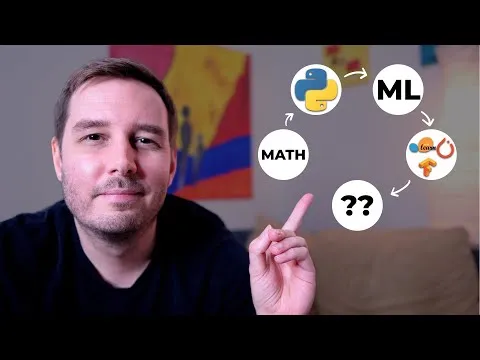
Supervised Machine Learning: Regression 
Discover the fundamentals of supervised machine learning regression with this course! Learn how to train regression models to predict continuous outcomes, use error metrics to compare models, and use regularization techniques to prevent overfitting. Suitable for aspiring data scientists with Python development experience and knowledge of data cleaning, calculus, linear algebra, probability, and statistics. ▼
ADVERTISEMENT
Course Feature
![]() Cost:
Cost:
Free
![]() Provider:
Provider:
Coursera
![]() Certificate:
Certificate:
Paid Certification
![]() Language:
Language:
English
Course Overview
❗The content presented here is sourced directly from Coursera platform. For comprehensive course details, including enrollment information, simply click on the 'Go to class' link on our website.
Updated in [June 30th, 2023]
This course introduces participants to one of the main types of modelling families of supervised Machine Learning: Regression. Participants will learn how to train regression models to predict continuous outcomes and how to use error metrics to compare across different models. Best practices, including train and test splits, and regularization techniques will also be discussed. By the end of the course, participants should be able to differentiate uses and applications of classification and regression in the context of supervised machine learning, describe and use linear regression models, use a variety of error metrics to compare and select a linear regression model that best suits their data, articulate why regularization may help prevent overfitting, and use regularization regressions: Ridge, LASSO, and Elastic net.
This course is suitable for aspiring data scientists interested in acquiring hands-on experience with Supervised Machine Learning Regression techniques in a business setting. To make the most out of this course, participants should have familiarity with programming on a Python development environment, as well as fundamental understanding of Data Cleaning, Exploratory Data Analysis, Calculus, Linear Algebra, Probability, and Statistics.
[Applications]
Upon completion of this course, participants should be able to apply the supervised machine learning regression techniques they have learned to real-world data sets. They should be able to use linear regression models to predict continuous outcomes, and use error metrics to compare across different models. They should also be able to use regularization techniques to prevent overfitting.
[Career Paths]
[Job Position Path]Data Scientist
[Description]Data Scientists are responsible for collecting, analyzing, and interpreting large amounts of data to identify trends and patterns. They use a variety of techniques, such as machine learning, statistical analysis, and data mining, to develop predictive models and algorithms that can be used to make decisions and solve problems. Data Scientists must be able to communicate their findings to stakeholders in a clear and concise manner.
[Development Trend]The demand for Data Scientists is growing rapidly as businesses become increasingly data-driven. Companies are looking for Data Scientists who can help them make sense of the vast amounts of data they have access to and use it to make informed decisions. As a result, Data Scientists must stay up-to-date on the latest technologies and trends in the field. Additionally, Data Scientists must be able to work with a variety of stakeholders, from executives to engineers, to ensure that their findings are understood and used effectively.
[Education Paths]
[Recommended Educational Path]
For those interested in pursuing a degree in supervised machine learning, a Bachelor's degree in Computer Science or a related field is recommended. This degree will provide a comprehensive understanding of the fundamentals of computer science, including programming, data structures, algorithms, and software engineering. Additionally, courses in mathematics, such as calculus, linear algebra, and probability and statistics, will be beneficial.
At the graduate level, a Master's degree in Machine Learning or Artificial Intelligence is recommended. This degree will provide a deeper understanding of supervised machine learning, including regression, classification, and clustering. Additionally, courses in deep learning, natural language processing, and computer vision will be beneficial.
The development trend of supervised machine learning is towards more complex models and algorithms, such as deep learning and reinforcement learning. As such, courses in these areas will be increasingly important for those interested in pursuing a career in supervised machine learning. Additionally, courses in data engineering, data visualization, and data science will be beneficial.
Course Provider

Provider Coursera's Stats at AZClass
Discussion and Reviews
0.0 (Based on 0 reviews)
Explore Similar Online Courses

Autodesk Certified Professional: Civil 3D for Infrastructure Design Exam Prep

ChatGPT Teach-Out

Python for Informatics: Exploring Information

Social Network Analysis

Introduction to Systematic Review and Meta-Analysis

The Analytics Edge

DCO042 - Python For Informatics

Causal Diagrams: Draw Your Assumptions Before Your Conclusions

Whole genome sequencing of bacterial genomes - tools and applications

How I would learn Machine Learning (if I could start over)

Learn Data Science and Machine Learning on Microsoft Azure


Start your review of Supervised Machine Learning: Regression